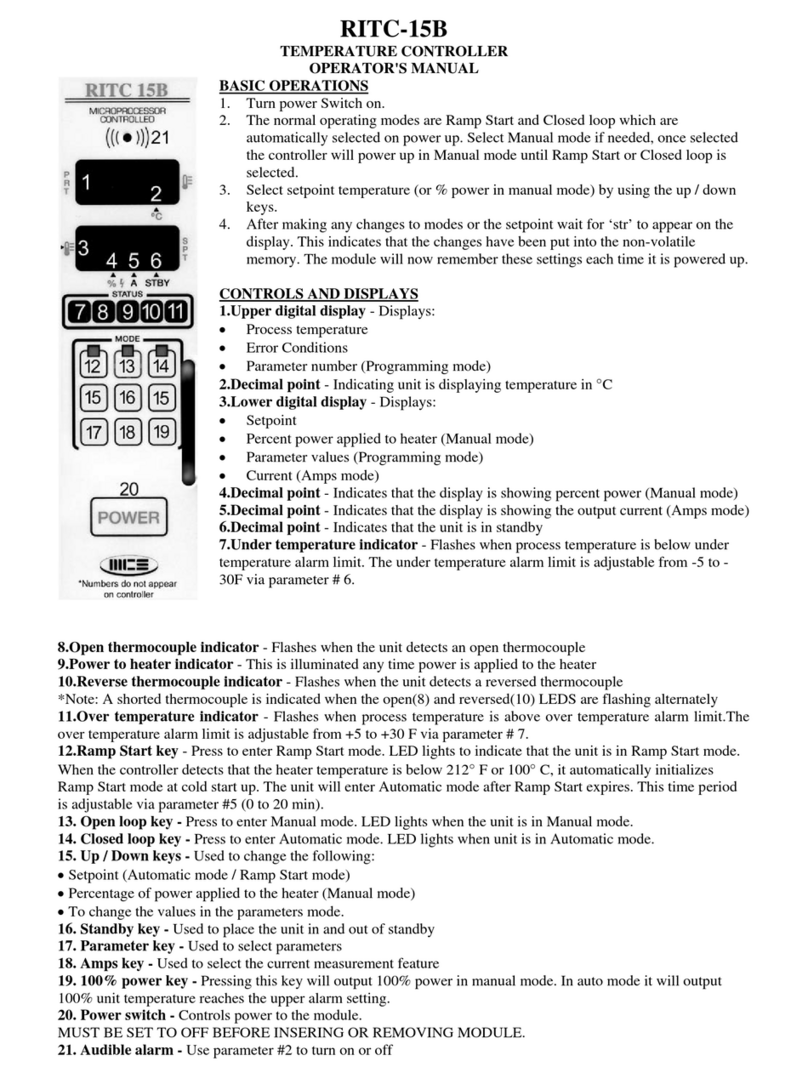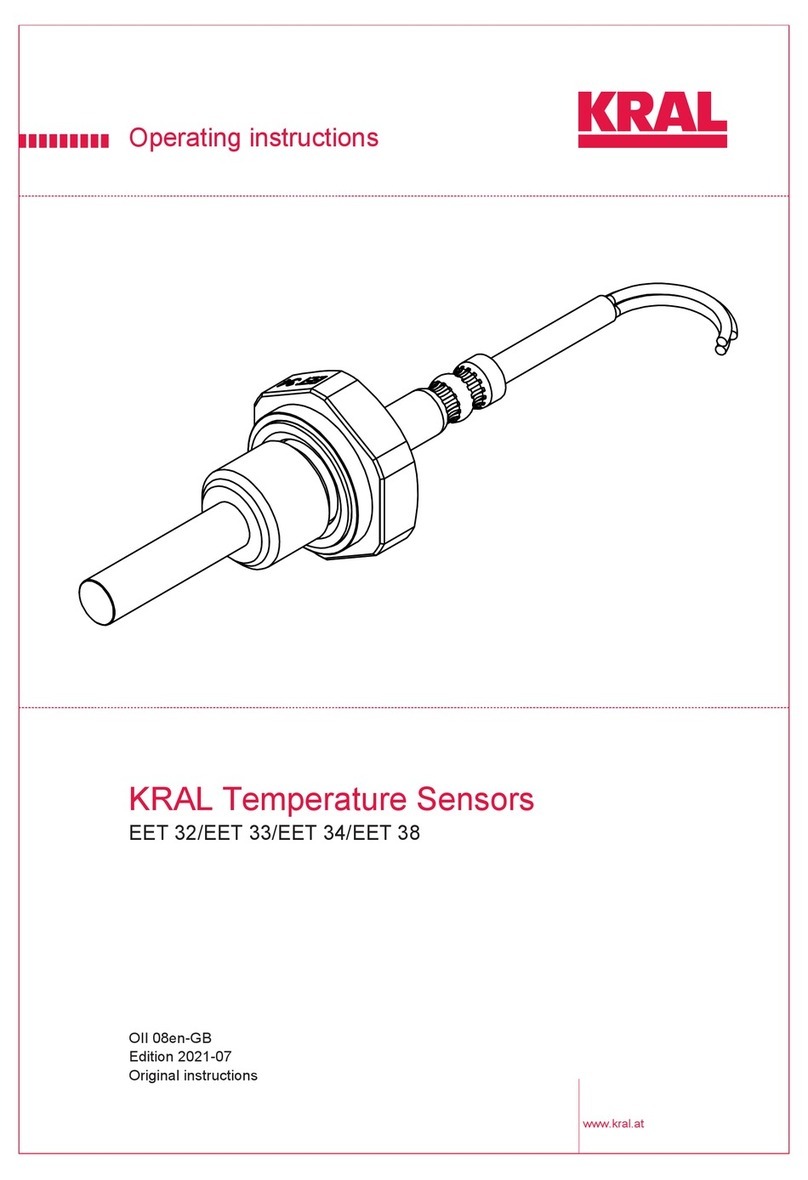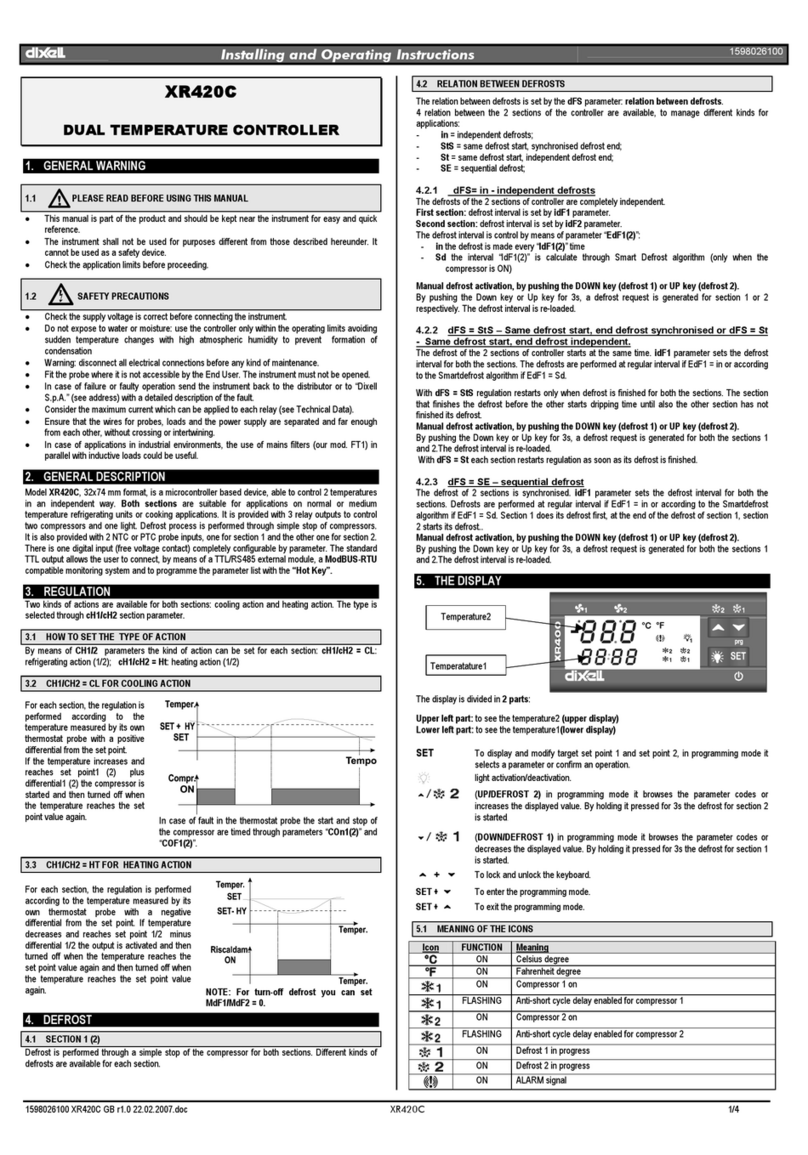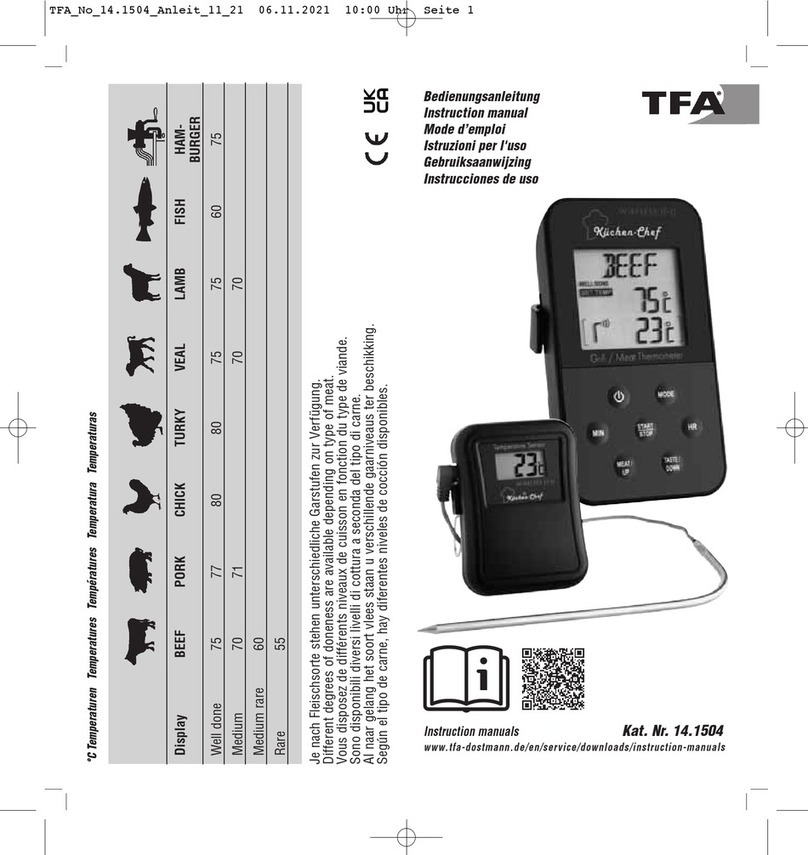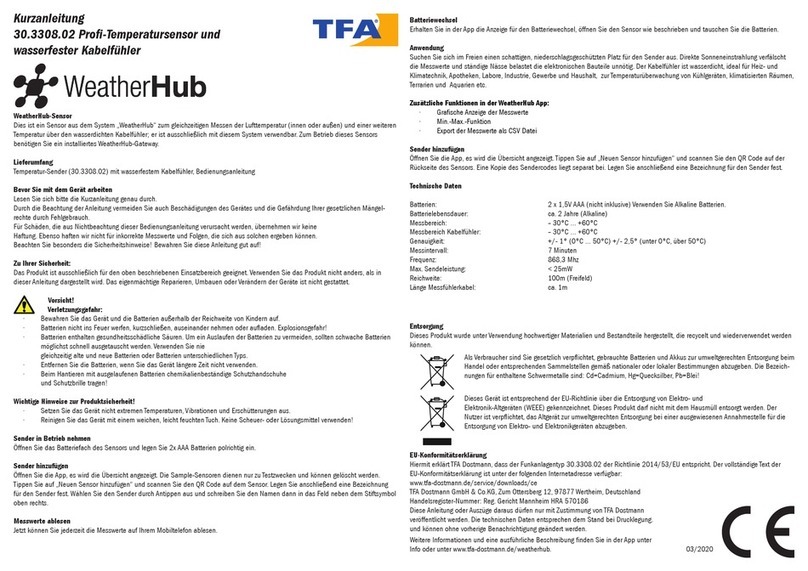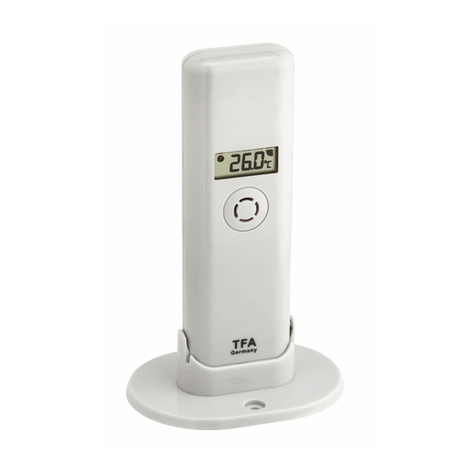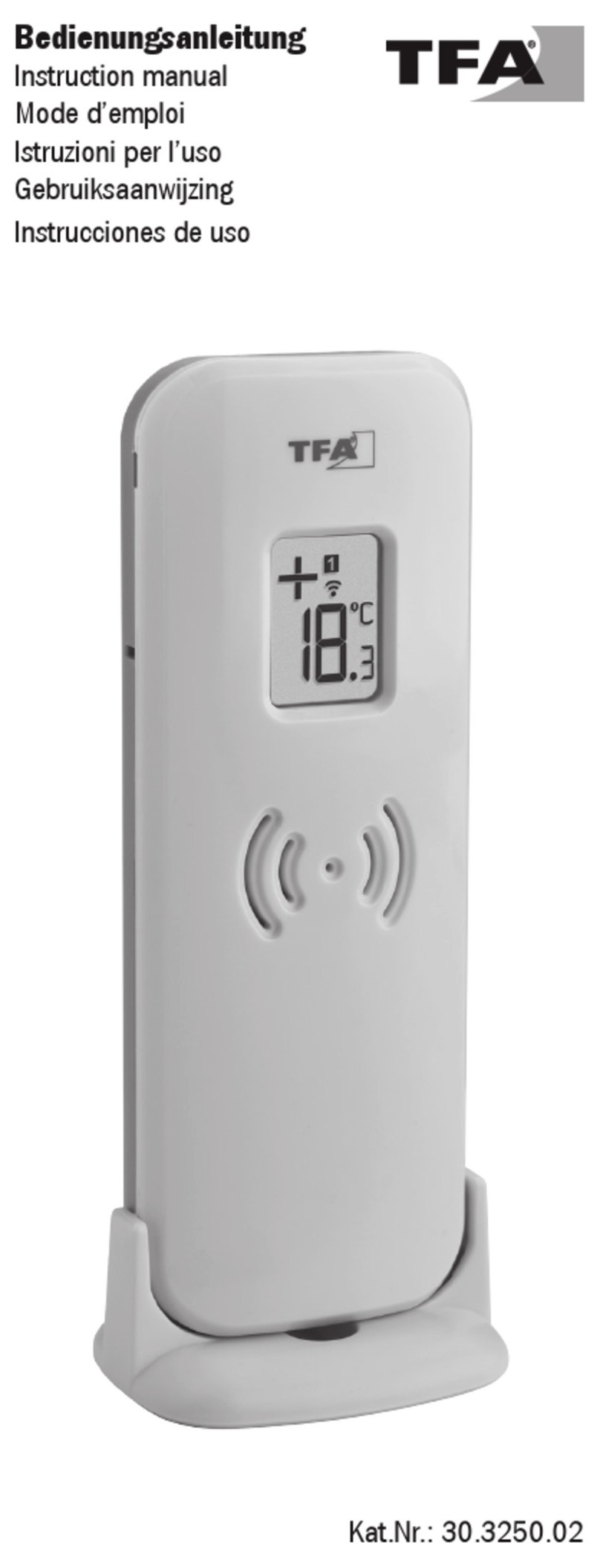54
2. Insert batteries to the first transmitter. The temperature station will start learning the transmitter. The
outdoor Channel 1 (out 1) temperature and humidity readings will then be displayed. User may
observe the outdoor channel icon appear. (If this does not happen after 3 minutes, the batteries will
need to be removed from both units and reset from step 1.)
3. fter the readings from the first transmitter (Channel 1) are successfully shown by the temperature
station, insert batteries to the second transmitter. The outdoor “Channel 2” temperature and
humidity readings will then be displayed. User may observe the outdoor channel icon appear.
4. Set up the third, fourth, and fifth transmitter (if applicable) one by one as described in the above
steps.
5. Please note that the unit’s built-in memory stores not only saved readings but also any integrated
transmitters on their respective channels. If after you start to use the unit not all transmitters are
being received, you can manually incorporate these one by one as described at
LE RNING/REMOVING TR NSMITTER.
To free up a used channel for a new transmitter please proceed as described at point 4.
You can also do this for all channels at the same time by returning to the factory settings as
described at CLE RING LL D T ND SETTINGS OF THE TEMPER TURE ST TION FROM
THE PERM NENT MEMORY.
Please note that this will delete all stored data.
6. The temperature station will also try to receive the DCF time signal (radio controlled) after the
transmitter signal reception.
7. If after 10 minutes, the DCF time has not been received, press and hold the OK () key for 3
seconds to enter the Set up mode for manual time setting. The clock of the temperature station will
automatically attempt to receive the DCF time at midnight. When this is successful, the received
time will override the manually set time. The date is also updated with the received time. (Please
refer also to notes on “Radio controll d Tim R c ption” and “Manual S tting”).



